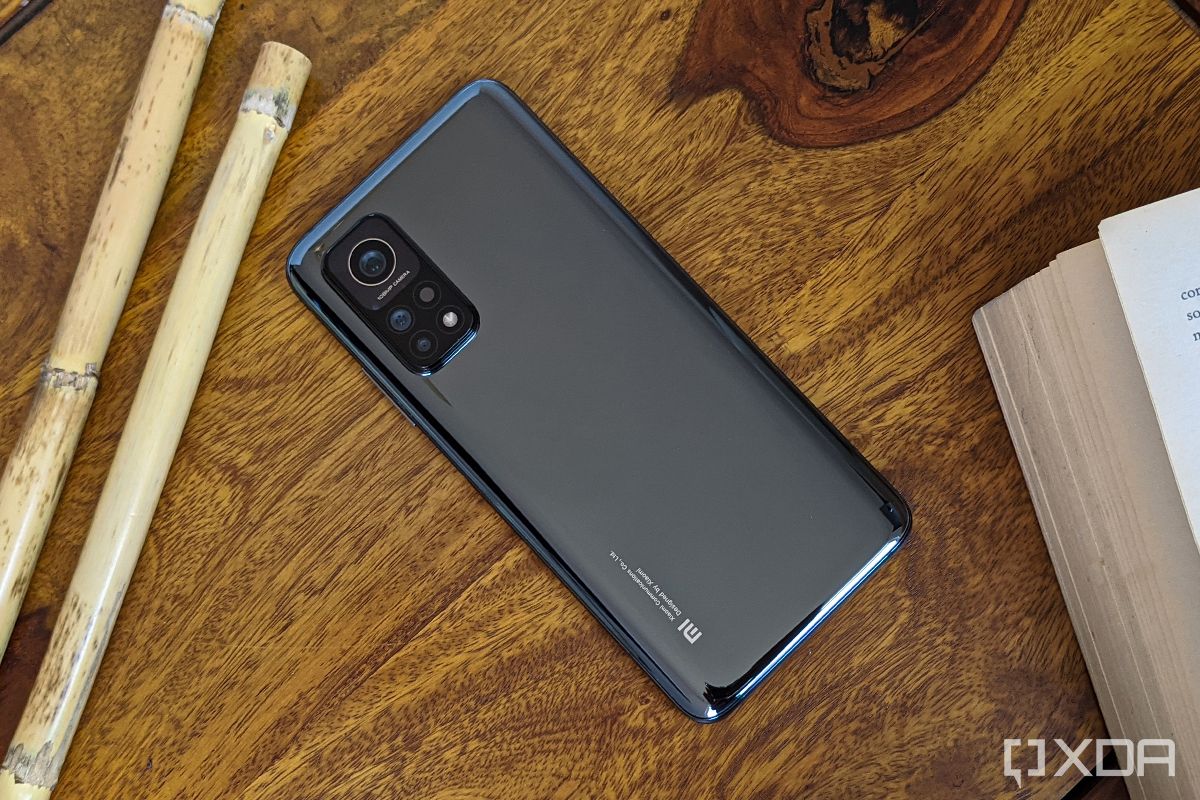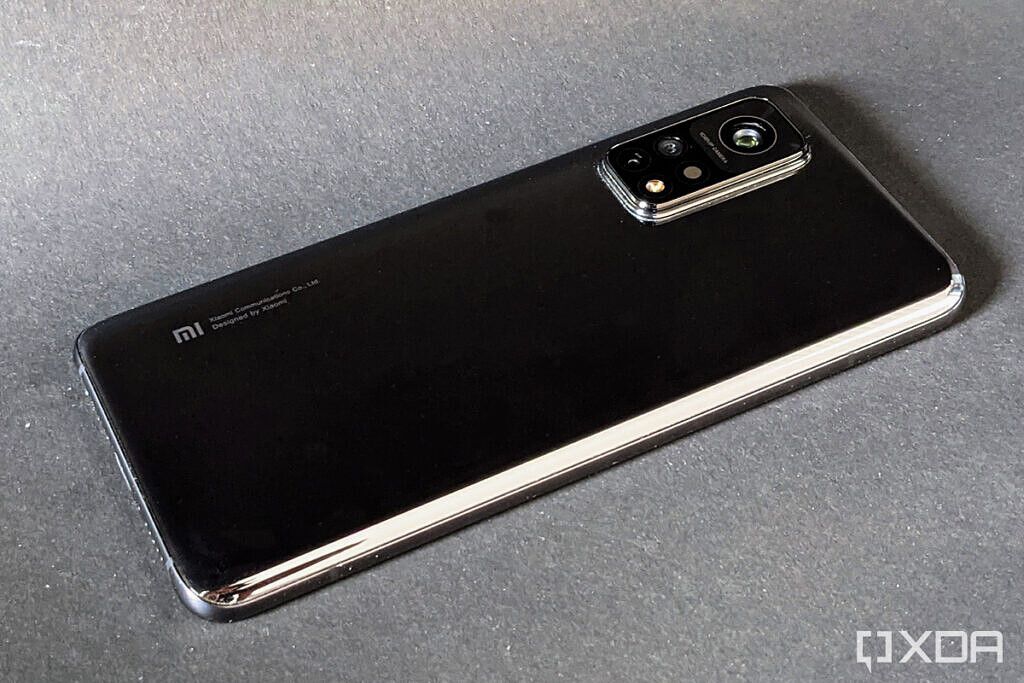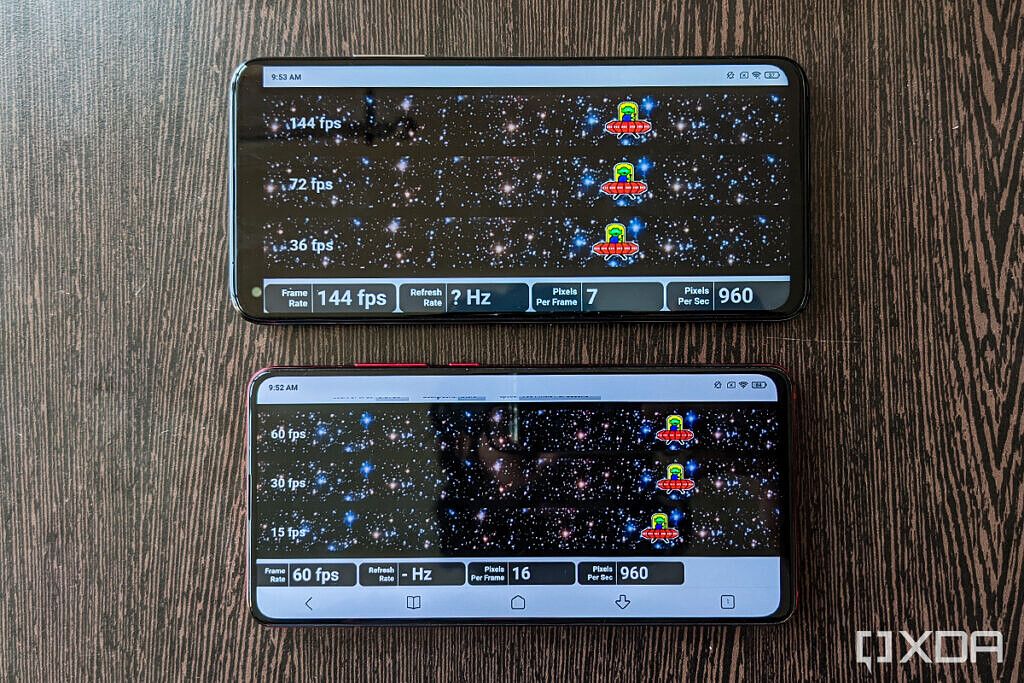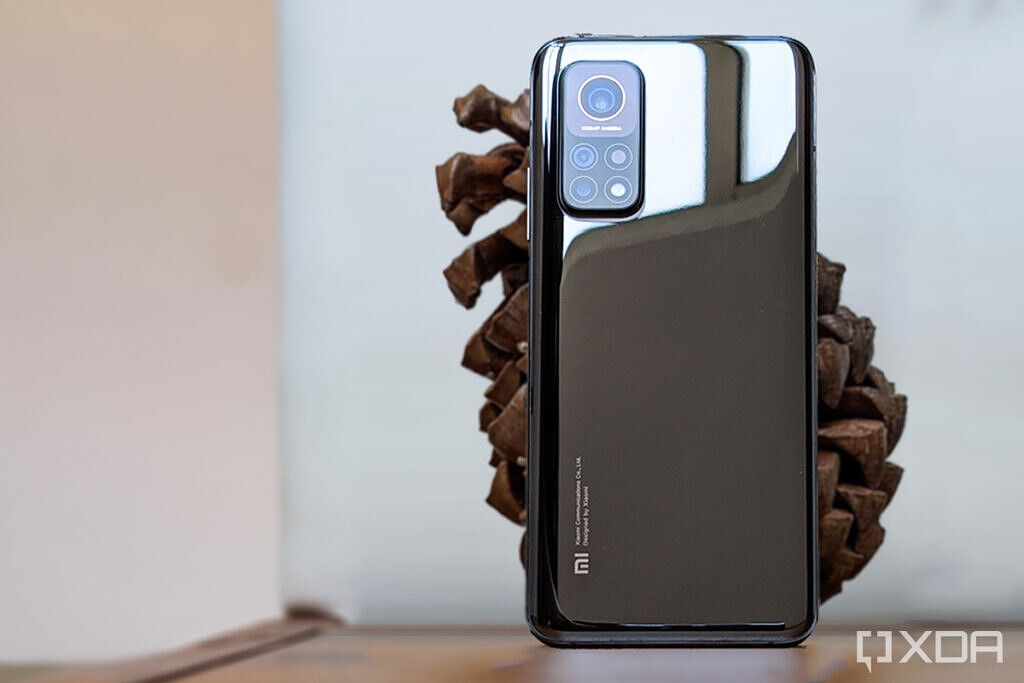Smartphone gaming is now more popular than ever. It has evolved from existing as a niche to being a core value proposition on smartphones. Nowadays, everyone — from smartphone manufacturers to chipmakers — tries to seize as many opportunities as possible to tout their devices' gaming capabilities. Amidst this, affordable "flagship killers" have a newfound duty to entertain hardcore mobile gamers. The Xiaomi Mi 10T and the Mi 10T Pro were launched in September and are well-suited for inclusion in the category of "flagship killers".
Although Xiaomi's definition of a "T" upgrade differs from how OnePlus — which started the trend with the OnePlus 3T — projects it, the Mi 10T Pro features the same internal hardware as the more premium Mi 10 series from early 2020. The Mi 10T Pro is powered by Qualcomm's current flagship Snapdragon 865 chipset along with 8GB of RAM LPDDR5 RAM. Therefore, we don't expect any lapses in performance. To its advantage, the Mi 10T Pro also features a 144Hz refresh rate display which also supports adaptive refresh rate to offer a jitter-free usage and gaming experience.
So, in this review, we will examine Xiaomi's claims of jitter-free performance on the Mi 10T Pro while also testing its abilities in some of the more demanding games. Before we dive into our performance analysis, here are the specifications that the smartphone offers.
Xiaomi Mi 10T Pro: Performance
The Qualcomm Snapdragon 865 mobile platform is what powers the Xiaomi Mi 10T Pro. It is a 7nm SoC (system-on-a-chip) fabricated using TSMC's N7P process. The CPU on the Snapdragon 865 comes in a 1+3+4 configuration, featuring a Kyro 585 "Prime" core based on ARM's Cortex-A77 design with a maximum frequency of 2.84GHz, three more Kryo 585 cores but at a lower frequency of 2.4GHz for sustained performance, and four Kryo 385 cores that are based on ARM's Cortex-A55 design and clocked at 1.8GHz.
Even though Qualcomm has also released the Snapdragon 865 Plus with an overclocked Prime core, most manufacturers have stuck to the original chipset — with the ASUS ROG Phone 3 being the notable exception. Along with the aforementioned CPU, the Snapdragon 865 also features an Adreno 650 GPU along with native support for 5G, Wi-Fi 6, and dual-frequency GPS.
Synthetic benchmarks are among the preliminary methods that a lot of us use to objectively assess performance. Snapdragon 865, that powers the majority of flagship smartphones of 2020, has already been profiled extensively using popular synthetic benchmarks including Geekbench 5, PCMark Work 2.0, 3DMark, GFXBench, etc.
Upon running these benchmarks on the Xiaomi Mi 10T Pro, we found that its scores align uniformly with those produced by the Mi 10, powered by the same chipset and reviewed by us earlier this year. So, we are omitting separate tests for this review. In case you are interested in learning about how these devices fare in terms of benchmarks, take a look at the Performance section of our Xiaomi Mi 10 review.
Even though synthetic benchmarks are indicative, they do not tell the complete story about real-world performance. This is why we used XDA's in-house benchmarks to evaluate app launch speeds and the fluidity of the user experience. Our detailed analysis using these tests on the Mi 10T Pro follow:
App Launch Speed Test
XDA's Editor-in-Chief, Mishaal Rahman, and Senior Contributor, Mario Serrafero, have created a new script to test the launch speeds of apps on different smartphones. This test utilizes Android’s ActivityManager shell interface to quantify the amount of time taken by any smartphone to launch 12 popular applications from a cold start (i.e. when these apps are not already running in the background). These applications (in the same order they are used in the test) are Google Chrome, Facebook, Gmail, Google Maps, Messages, Netflix, Google Photos, Google Play Store, Twitter, WhatsApp, XDA, and YouTube.
During the test, each of these apps is launched and subsequently terminated before the next one is launched. The total time (in milliseconds) taken to cold-start and then kill an app for several iterations is calculated and represented by the value on the bottom of each of the bars. Meanwhile, the median is represented by the number above the bar.
[sc name="pull-quote-left" quote="The Mi 10T Pro launches apps faster than the ROG Phone 3 and Samsung Galaxy S20."]
The time values recorded in our App Launch Speed Test indicate that Xiaomi has done a good job while optimizing app startup on the Mi 10T Pro — or MIUI 12, in general. While the Mi 10T Pro stands lower on the scoreboard than what we saw in our OnePlus 8T review, the app launch durations for all of these 12 apps are noticeably shorter than what Mishaal recorded for the ASUS ROG Phone 3 and the Samsung Galaxy S20 (Exynos) during his ASUS ROG Phone 3 review. Look at the graphs above to see how the Mi 10T Pro compares to the rest of the devices.
Looking at these scores holistically, all of these smartphones open apps really quickly. The difference of a few milliseconds is certainly not noticeable by the naked eye in any case.
UI Stutter/Jank Test
Our next in-house benchmark measures the smoothness of a smartphone's display and its ability to present new frames without any lag or stutter.
The XDA UI Stutter and Jank Test uses a modified version of Google's open-source JankBench benchmark. The benchmark determines the performance of a smartphone by emulating a variety of tasks that are commonly seen in different apps. These tasks include scrolling through a ListView with text, scrolling through a ListView with images, scrolling through a grid view with a shadow effect, scrolling through a low-hitrate text render view, scrolling through a high-hitrate text render view, inputting and editing text with the keyboard, repeating overdraws with cards, and uploading bitmaps.
The time taken to draw and present every frame during each of these tests is recorded and plotted against the threshold values represent by colored horizontal lines. These threshold values — in ms — correspond to the time taken to present a frame on a display for different refresh rate values. For instance, a 60Hz refresh rate means a new frame is displayed 60 times per second, which means once in 16.67ms. Likewise, 11.11ms represents 90Hz refresh rate, 8.33ms represents 120Hz refresh rate, and 6.94ms represents 144Hz. Meanwhile, the vertical bars represent the time taken to display each frame, and any vertical bar that surpasses the aforementioned horizontal lines indicates stutter or jank.
The Xiaomi Mi 10T Pro supports a maximum refresh rate of 144Hz along with support for AdaptiveSync. This means the display can alter between seven different refresh rate settings — 30Hz, 48Hz, 50Hz, 60Hz, 90Hz, 120Hz, and 144Hz — based on the content that is to be displayed. Nonetheless, all of these tests actuate the highest refresh rate supported by any device which happens to be 144Hz in this case.
In our Jank test, the Xiaomi Mi 10T Pro runs smoothly in most of the tests. Here are our observations:
- It breezes through the ListView image scrolling and ListView text scrolling tests with barely any stutter, with less than 1% of the frames missing the 144Hz in both the tests.
- Only 1.01% and 1.65% of the frames miss the target of 144Hz in the case of Low hit rate and High hit rate render tests, respectively. Once again, less than 1% of the frames miss the 120Hz target in these two tests.
- In the text input and editing test, the Mi 10T Pro performs relatively poorly with 4.07% frames missing the 144Hz mark, 2.76% of the frames missing the 120Hz mark, and 1.57% of the frames falling behind the 90Hz target. This may lead to represent some micro-stutters while entering or editing text on the smartphone.
- When it comes to GPU overdraw, 7.19% of the frames fail to match up to the 144Hz target while 6.11% fail to reach 120Hz. This irregularity is primarily seen only for a small percentage of the total frames (around the n=12000 frames mark).
- Perhaps the only alarming result is the Bitmap Upload test with 94.78% of the frames showing janky behavior at 144Hz. Further, 34.73% of the frames also fail to meet the 120Hz target. In comparison, about 78% and 16% of the frames miss the 144Hz and 120Hz targets, respectively, on the ASUS ROG Phone 3. Since all of the graphic elements in Android are drawn using bitmaps, we can suspect major stuttering in the case of bitmaps with large sizes — especially with graphics-heavy applications like games. In real-world usage, there are no major stutters visible except in the app drawers of third-party launchers.
Now that we have mentioned games, more people will perceive any jank or stutters while gaming than while scrolling through the UI or typing on the Mi 10T Pro. This is why we are benchmarking the performance of the Mi 10T Pro for various popular games.
Real-World Gaming
For our gaming analysis of the Xiaomi Mi 10T Pro, we used the Pro version of Gamebench and collected data over at least 25 minutes of gameplay. All of these games were played with MIUI's Game Turbo mode running in the background and here is what we found:
PUBG Mobile
PUBG Mobile has become one of the most revered battle royale games. The Xiaomi Mi 10T Pro can drive a maximum graphics settings of Ultra HD on PUBG Mobile, which is fantastic. For this mode, however, the frame rate is limited to the Ultra setting ie. 40fps. In case you want to enjoy gaming at Extreme frame rate ie. 60fps, you must switch the graphics settings to HDR. While OnePlus phones upwards of the OnePlus 7T, as well as the ASUS ROG 3, also support gameplay at 90Hz, it is unfortunately not supported on other devices including the Xiaomi Mi 10T Pro as of now.
At HDR graphics and Extreme frame rate settings, the Mi 10T Pro shows a consistent performance, relentlessly outputting frame rates close to 60fps through the 26 minutes of gameplay. The only frame rate drops were seen during the loading screens. During our tests, we got a mean frame rate of 60fps and an FPS stability of 90%, and a variability index of only 0.8FPS. From the frame rate distribution, we can see that more than 96% of the frames were transmitted at either 59fps (~14%), 60fps (~72%), or 61fps (~10%).
At HDR graphics and Extreme frame rate settings, the Mi 10T Pro shows a consistent performance, relentlessly outputting frame rates close to 60fps through the 26 minutes of gameplay
To be fair, this kind of performance is expected from a flagship killer the Xiaomi Mi 10T Pro. While the upper half of the smartphone does start warming up within 10 minutes, the rising temperature does not affect or throttle the performance. So you can confidently snatch that chicken dinner away from your opponents while playing PUBG Mobile on the Mi 10T Pro.
Vainglory
Vainglory is a popular RPG that supports high frame rates, and that means we can very well utilize the 144Hz display to enjoy a super smooth experience. Due to its engaging graphics and fast-paced gameplay, Vainglory can be very taxing on the hardware, which makes it a great game for testing the Mi 10T Pro's gaming performance.
We chose the 5v5 match that lasts 25 minutes to test the performance of the Mi 10T Pro. Despite the graphics-intense gameplay, the smartphone could output an unwavering frame rate of nearly 144fps — the maximum supported by this display. For more than 95% of the frames, the frame rate was either 143fps (~35%) or 144fps (60%), resulting in extremely smooth gameplay. The only dip in the frame rate is observed on the loading screen following a 7-minute-long wait before the online game is actually connected.
Battlelands Royale
Battlelands Royale is yet another battle royale game but instead of a first-person or third-person perspective, you play from an aerial view and that makes the game really engaging.
The Xiaomi Mi 10T Pro once again performs magnificently, clocking a consistent frame rate of 144fps. The only occasional dips we see in the frame rate are at the loading screens since each match lasts only about 3-4 minutes.
Lara Croft GO
In this adventure-packed game, Lara Croft, the primary character from Tomb Raider, marches her way against obstacles in calculated board game-style singular movements. Despite being designed as a puzzle, the game features some intense graphics that shows mighty creatures such as giant snakes and lizards in the besieged temple. These graphic elements are enough to strain the hardware and make my OnePlus 7T heat up. Here's how the game works on the Mi 10T Pro:


The Mi 10T Pro faces absolutely no difficulty in sustaining a frame rate above 140fps. The only fluctuations or gaps in the frame rate comes at loading screens and cutscenes apart from which, the smartphone has absolutely no trouble meeting expectations.
The Legend of Zelda: Majora’s Mask 3D with Citra Emulator
Besides enjoying some of the strenuous Android games, we also tested out The Legend of Zelda: Majora’s Mask 3D, a 2015 Nintendo 3DS game using the Citra Emulator. The graphics resolution was set to 4x of what the ROM originally renders the game in.
Quite like all of the games we played above, the Mi 10T Pro maintains excellent performance with the Citra Emulator as well. Throughout the gameplay, the frame rate was constant around the 60fps mark with minor stutters. The only plunges in the frame rate were observed during the cutscenes. Except for the occasional touch response issues with Citra, there were no issues while playing the Nintendo 3DS game.
Note: We do not endorse the use of pirated emulator ROMs. Please ensure you use a ROM that is legitimately owned by you.
Thanks to GameBench for providing us a journalist license. GameBench is a suite of tools for developers to analyze the fluidity, power consumption, and memory usage of games. GameBench is available as an app on Google Play Store (unlisted) and as a desktop application. For more information, visit GameBench.net.
In case you're unable to download the Gamebench app from the Google Play Store, you can download it using their desktop app.
Conclusion
The Xiaomi Mi 10T Pro is equipped with powerful hardware and there's no reason to doubt its performance. As we saw above, it stands neck-and-neck with other affordable flagships and flagships killers despite being slightly more affordable than them. At this price point, perhaps the only serious competition that the Mi 10T Pro faces is from the OnePlus 8T.
[sc name="pull-quote-right" quote="With the Mi 10T Pro, there is no compromise in performance."]
While both of these devices offer excellent value for money, the OnePlus 8T features a brighter AMOLED display and 65W charging while the Mi 10T Pro makes up with its high-quality LCD display that offers impressive color accuracy and an adaptive refresh rate that changes with the content being displayed. This ability to lower the refresh rate when a higher refresh rate is not required helps the Mi 10T Pro to have longer battery life. In addition, the Mi 10T Pro also comes with a 108MP primary camera. But if you don't need that kind of camera competency, you can instead opt for the non-Pro variant that comes with a 64MP camera and is relatively even more affordable.
In terms of gaming, the Xiaomi Mi 10T Pro does not give in to any strain despite long gaming sessions. It displays an unwavering strength in terms of games that support high refresh rate gameplay. The excellent gaming performance, especially for games at 144Hz, also pacifies the concerns on the jittery performance we saw on the Bitmap upload test in UI Jank and Stutter Test above.
Xiaomi Mi 10T & 10T Pro XDA Forums
Overall, if you need a good flagship killer, you would not be making any compromises if you buy the Mi 10T or the Mi 10T Pro.

Xiaomi Mi 10T
A powerful performance paired to a super smooth 144Hz display and 108MP cameras make an excellent flagship killer.












